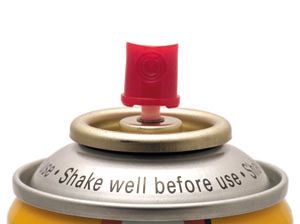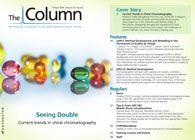GC–MS Detects and Identifies Four Ozone Depleting Gases in Atmosphere
Four new ozone-depleting substances (ODSs) - CFC–1121, CFC–112a, CFC–113a, and HCF–133a - have been detected and identified in the Earth's atmosphere using gas chromatography–mass spectrometry (GC–MS).1 The research published in Nature Geoscience compared samples collected between 1978 and 2012 to establish a clear increase in the emissions of these gases, even though CFC production has been banned globally since 1987.

Photo Credit: Photosearch/Getty Images
Four new ozone-depleting substances (ODSs) — CFC-1121, CFC-112a, CFC-113a, and HCF-133a — have been detected and identified in the Earth’s atmosphere using gas chromatography–mass spectrometry (GC–MS).1 The research published in Nature Geoscience compared samples collected between 1978 and 2012 to establish a clear increase in the emissions of these gases, even though CFC production has been banned globally since 1987.
More than 25 years have passed since the discovery of the hole in the ozone layer above Antarctica, now linked to changes in climate. Man-made gases were linked to the destruction of the ozone layer, in particular chlorofluorocarbons (CFCs) and their intermediates hydrofluorocarbons (HCFCs).
Johannes Laubes, lead investigator of the study said: “CFCs are the main cause of the hole in the ozone layer over Antarctica. Laws to reduce and phase out CFCs came into force in 1989, followed by a total ban in 2010. This has resulted in successfully reducing the production of many of these compounds on a global scale. However, legislation loopholes still allow some usage for exempted purposes.” Exempted purposes, as referred to by Laubes, refer to the use of CFCs as feed-stocks and intermediates in the production of chemicals such as insecticides and electronic cleaning products.
The gases were identified, using GC–MS, in atmospheric samples collected as part of the Civil Aircraft for the Regular Investigation of the Atmosphere Based on an Instrument Container (CARIBIC) project on flights between Germany and South Africa between 2009 and 2011.2 To establish a timeline and to model the accumulation of the gases, atmospheric samples collected from above Tasmania, Australia between 1978 and 2012 were also analyzed. Previously published data from the analysis of deep snow firns in Greenland was used to build a reconstruction of past gas concentrations.
Laube told LCGC that there were various challenges in the analysis. He said: “Firstly, their concentrations are very small, less than 1 part per trillion (ppt) per part of air. In combination with limited sample sizes (especially for air samples collected in the stratosphere, where ambient pressures fall below 50 mbar), it is often hard to get the high precision data you need for reconstructing atmospheric spatial and temporal concentration gradients. And secondly, there are thousands of trace gases present in air, and they are being emitted from a large variety of sources. So we are dealing with a comparably and variable complicated matrix.”
The team found that the gases have accumulated since the 1960s, but accumulation in Tasmania has lagged behind the Antarctica, suggesting emission of the gases from the Northern hemisphere. The team estimated, using the GC–MS data and modeling, that the total emissions of the four gases up to 2012 was 74,000 tonnes.
Laube said: “At their current concentrations these gases do not pose a big threat to the ozone layer. However, two of them continue to increase in concentration. Especially, CFC-113a, has started to accelerate its increase in recent years. If such an acceleration continued, it could become a big problem in the next years. But we are here in a very good position (unlike for many other environmental problems) to be able to deal with it before it happens.”
Reference
1. J. C. Laube et al, Nature Geoscience, DOI:10.1038/ngeo2109
(2014). http://www.nature.com/ngeo/journal/vaop/ncurrent/full/ngeo2109.html
2. Civil Aircraft for the Regular Investigation of the Atmosphere Based on an Instrument Container, http://www.caribic-atmospheric.com/ [Last accessed: March 14 2014]
This article was first featured in The Column. Click here to view or print that issue>>

Determining the Effects of ‘Quantitative Marinating’ on Crayfish Meat with HS-GC-IMS
April 30th 2025A novel method called quantitative marinating (QM) was developed to reduce industrial waste during the processing of crayfish meat, with the taste, flavor, and aroma of crayfish meat processed by various techniques investigated. Headspace-gas chromatography-ion mobility spectrometry (HS-GC-IMS) was used to determine volatile compounds of meat examined.

.png&w=3840&q=75)

.png&w=3840&q=75)



.png&w=3840&q=75)



.png&w=3840&q=75)









